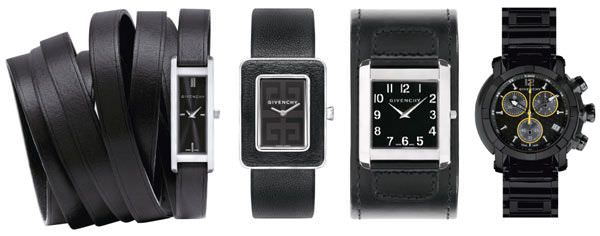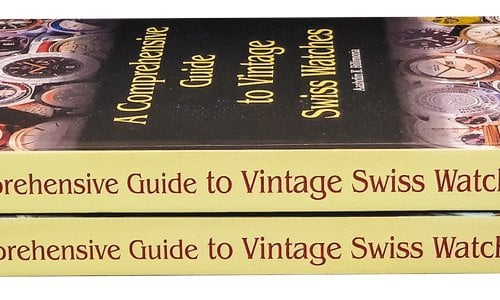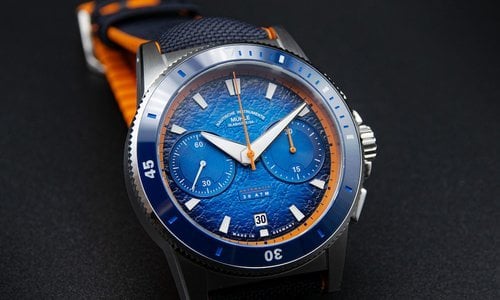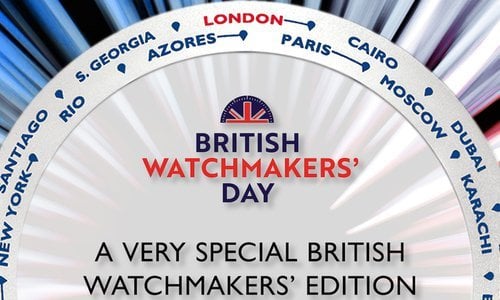The watch towns located in the Jurassian Arc region cannot, strictly speaking, talk about glamour per se. Readers in Dubai or Rio de Janeiro don’t really know about the areas of Val-de-Travers or Vallon de Saint-Imier. These industrial and Protestant zones—making up the homeland of timekeeping—are frozen in an austere landscape of prairies and pine trees, half-way between the plains and the mountains.
Bienne, the capital of the Swatch Group, has more finery in its industrial complex than the charms of Portofino. But it is in Portofino—where the yachts of the Russian and Arab billionaires are anchored—where you see the very rich sporting their priceless Swiss Made watches, timepieces that are the ambassa-dors of a savoir-faire that is both illustrious and modest.
Affair of conviction, affair of marketing
You get the picture. Some watchmakers—at the summit of their art—are fighting over manufacturers in much the same way that the perfume industry fights to get the most discerning ‘noses’. The Swiss watch—whose crazy ride seems to be continuing in spite of the dramatic fallout from the sub-prime crisis—is not exempt from having a certain arrogance. But it is a discreet arrogance. And, above all, these timepieces have a high level of technology behind them. Theirs is a specialized world of gear trains and lab coats.
As it turns out, the large French fashion brands have become infatuated with this particular world. We can count Hermès, Chanel, Dior, and Givenchy among them. They have all set their watches to Swiss time. An affair of conviction, an affair of marketing. And, to repeat the well-known coffee commercial: ‘What else?’ Yes, what else, indeed, than Swiss Made? With the exception, however, that the Panzer-couturier at Chanel, Karl Lagerfeld, would not think for even one second about ‘Swiss Made’ when he designs his collections. But that is alright, since it is not his job to think about the very expens-ive watches that are destined for the luxury brand’s future clients.
A separate activity
“The jewellery and watch activities are separate from the couture and accessories sectors,” explains Nicolas Beau, International Director of Chanel’s watch division. The great couture house, founded by Miss Coco Chanel, only ventured into the luxury watch market some 20 years ago. Yet in two decades, it has carved out an illustrious place for itself thanks to its Artistic Director, Jacques Helleu, who unfortunately passed away a year ago. It was Helleu—the creator of the simple and the sublime ‘Première’ and the recent (actually now eight years old) ‘J12’, available in men’s and ladies’ models—who raised ceramic to the rank of the diamond, and who saw his creations become wildly successful. Put on a Chanel watch and you will seem like an oligarch. Give it back and you will understand what separates you from an oligarch.
Chanel does not communicate information about its turnover or its sales volume. But we do know that business is good. The French brand’s watch division has a factory on the Jurassian plateau in La Chaux-de-Fonds. “If we want to make fine watches, we must be in Switzerland,” says Nicolas Beau. “About 99 percent of the necessary skills and competencies are found there. I don’t see where else our watches could be made. But there is nothing to prevent other countries from one day being able to offer the same services.” Should this last statement be construed as a threat by the Swiss watch—and financial—marketplace? In a capitalistic world, nothing is eternal.

At Chanel, the watch is thus not a reflection of the creativity of Karl Lagerfeld. Naturally, however, he can offer his suggestions. “Designers think about ‘design.’ The location where the product is made is the last thing on their mind,” adds Beau. Yet, fabricating the brand’s watches in Switzerland entails higher pro-duction costs. “This is a perfectly acceptable choice,” continues the international director of the watch division. “Switzerland, as in the rest of Europe, has a more expensive work force, but certain regions in that country are better able than others to protect us against counterfeiting.” Oh, really? The J12 is, without a doubt, one of the most copied watches in the world. In fact, Paris is swarming with fake J12s—in black or white plastic—that their owners don’t hesitate to proudly show off. It is interesting that Chanel is so reassured!
The luxury brand—Nicolas Beau emphasizes the world ‘luxury’—is banking on a type of ‘patrimonial’ marketing. “Our policy is not to come out with new models every year like we do for our couture collections,” he explains. This is the same reasoning that we see at Patek Philippe—their watches are meant to be handed down from father to son. For women—sorry ladies—it is a very different matter. Each generation wants her own watch, and will even purchase several watches in the same year. In fact, if this were not the case, how would business keep going?
The most French of the Swiss watches
With Hermès we find the most French of the Swiss watches in the fashion sector, unless, of course, we would categorize it is the most Swiss of the French watches. The former harness maker, whose primary business still is leather goods, prêt-à-porter, and silk, has its image to uphold. Commercially speaking, the brand is active in a niche market. Hermès’ niche is high quality craftsmanship for a discreet bourgeoisie—quite different from the trends we see at Dior or Chanel, for example, which are caught up in the constellation of ‘bling-bling’. If you are looking for a flashy tourbillion timepiece, you won’t find it at Hermès.

Emmanuel Raffner
It was only in 1978 that the luxury brand set up its own manufacturing facility in Switzerland. Entitled La Montre Hermès SA, it is located in Bienne. The company had, however, already established connections earlier with Swiss technology, and its first watch dates back to 1928. Today, La Montre Hermès employs approximately 100 people in the town of Bienne. And, in a continuing effort to affirm its reputation as a watchmaker, it introduced its own movement this year, created by the Vaucher Manufacture. Located in Fleurier, in the Val-de-Travers region, Vaucher sold 25 per cent of its capital to Hermès in 2006. Last year, the brand’s watch division realized a turnover of 105 million Euros.
The label Swiss Made is seen as an obvious necessity for the French brand. “The import-ance of this appellation is what made the watch division relocate to Switzerland. Swiss Made is an important element of the brand,” explains Emmanuel Raffner, Managing Director of La Montre Hermès. So, we see that not only ‘What else?’ is important but also ‘Where else?’
“The Swiss Made label appeals to women,” insists Raffner. Apparently, Swiss quality speaks to the feminine epidermis. “It is the excellence of the savoir-faire that makes us forget the savoir-faire,” he continues, inspired by the maxim. “The watches that sell well are those that do not have any problems. This is what women appreciate in the notion of Swiss Made.” The feminine clientele of La Montre Hermès make up 80 per cent of watch sales. The director is obviously pleased with the brand’s achievements: “We are considered to be Swiss watchmakers by the Swiss themselves.”
Hermès is very proud of its ‘Grandes Heures’ collection—presented on its ‘Cape Cod H1’ model—that was launched at BaselWorld this year. The watch lets the time be read as a function of the day’s calm periods or its rush hours. Equipped with a mechanical movement—noblesse oblige—it represents a big departure from the all quartz ‘Kelly’ watch of the 1970s, which accompanied the legendary handbag of the same name, created as a tribute to Princess Grace of Monaco.
For Givenchy, ‘the Swiss Made label is not essential’
We change dimensions as we change worlds. Givenchy is a brand belonging to the LVMH Group. The young Italian designer, Riccardo Tisci, has taken the place of the founder, Hubert de Givenchy. “The Swiss Made label, for us, is important but it is not something essential,” bluntly declares Raphaël Vieux, head of the fashion brand’s division of men’s access-ories and watches. Contrary to how watches are designed at Chanel and Hermès, the watch at Givenchy does not lead its own life. Rather, it is Riccardo Tisci who decides the models. While using the word ‘accessory’ to describe a watch at Chanel is definitely forbidden, it is quite acceptable at Givenchy.

“We also produce some of our accessories in China,” explains Vieux, who goes on to emphasize that this is, of course, not the case for the brand’s watches—or at least not yet. “As for our watches,” he adds, “they are fashion oriented, rather than watch-art oriented. For our high-end models, such as the Dorsale in crocodile, having it be Swiss Made is obvious, but we do not exclude the fact that other models may be manufactured in Asia. The Swiss Made label is not, for us, a sales argument. It is more of a concern for achieving quality. If a high-quality production facility were available to us elsewhere, we would not be concerned if our watches did not carry the Swiss Made label.” For the time being, however, even at Givenchy, the ‘Swiss quality’ appellation preserves its appeal.
The watch is being produced again at Givenchy after an absence of two years. They are sold in only three boutiques in France, all of them in Paris. Plans to expand outside of France are in the works, and they are targeting the markets of Britain, Italy, and Russia, for now. Prices range from 390 Euros to 1,390 Euros, with the exception of the Dorsale crocodile model, which sells for 5,000 Euros.
Givenchy does not have its own watch factory, but rather sub-contracts out production to an Italian company, which also manufactures for Gianfranco Ferré. Givenchy is, above all, a fashion brand with a Swiss Made movement.
‘Swiss Made’, an island in a sea of globalization
The positioning of Givenchy watches for the “young, technical, gothic, and romantic” consumer, as chosen by Riccardo Tisci, means that the brand does not need to depend on the Swiss Made label to sell its timepieces. This should give Swiss watchmakers pause for thought.
The young occidental generations, growing up with their iPods and mangas, may be less concerned, when they become adults, with where their consumer goods are made. The brand name and image will count for more than the place of fabrication. The Swiss Made label—an island in a sea of globalization—may very well become inundated over time. This is why the Swiss industry is currently trying to build even higher and thicker dikes to protect itself. But is this really the right strategy?
Source: Europa Star October-November 2008 Magazine Issue




